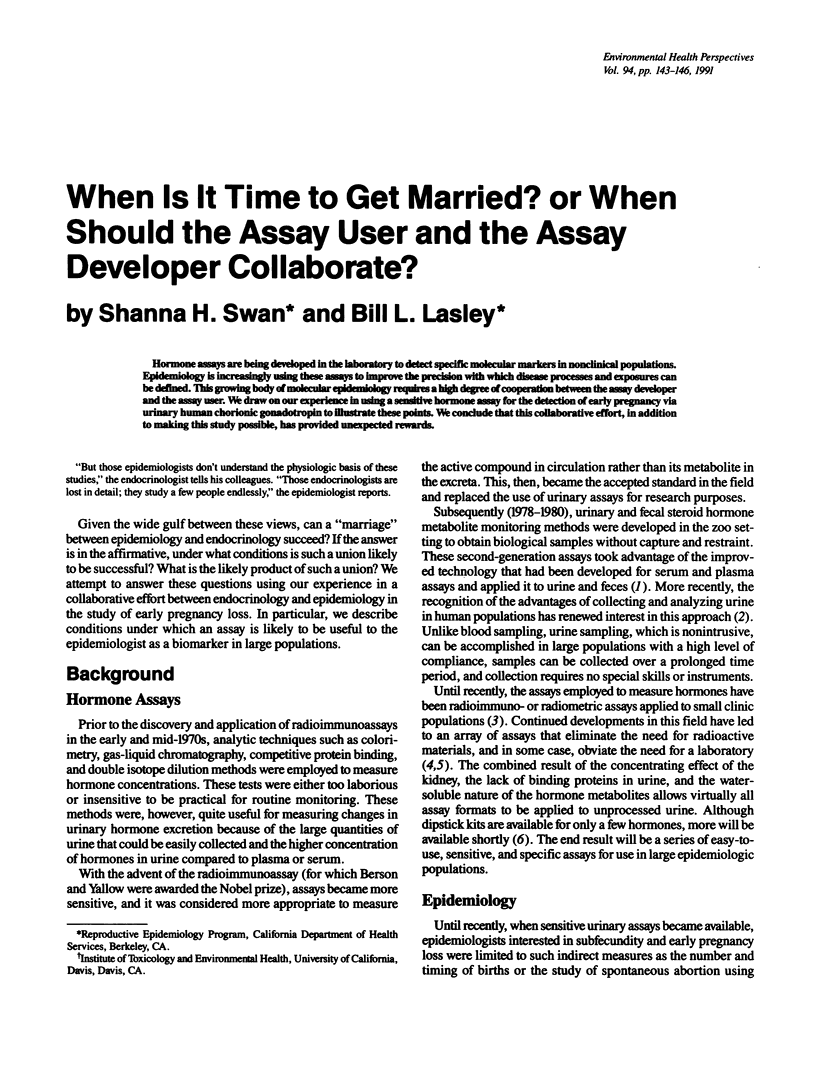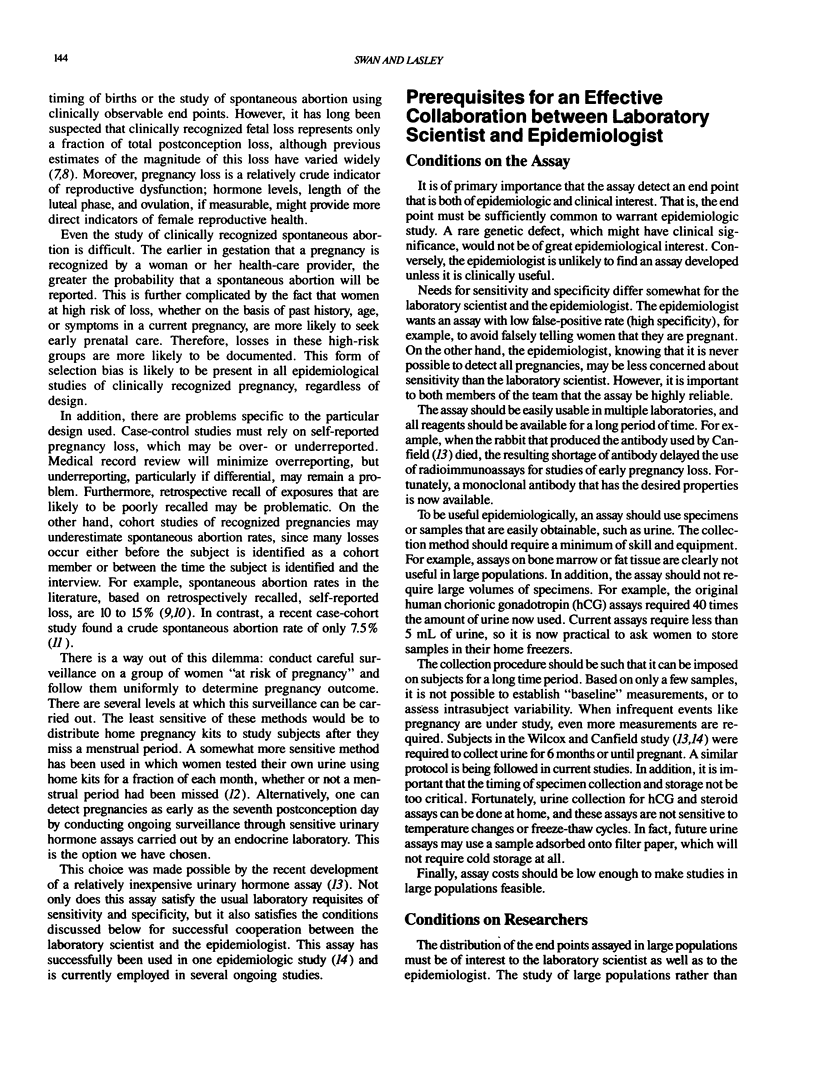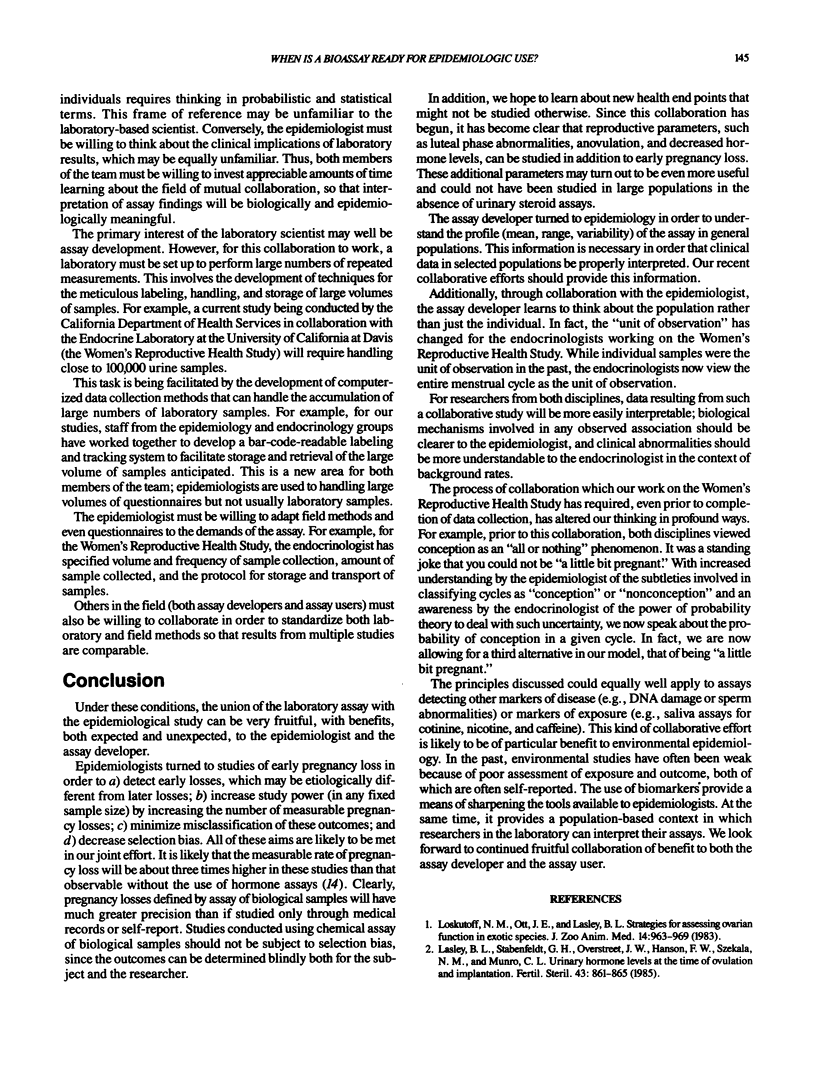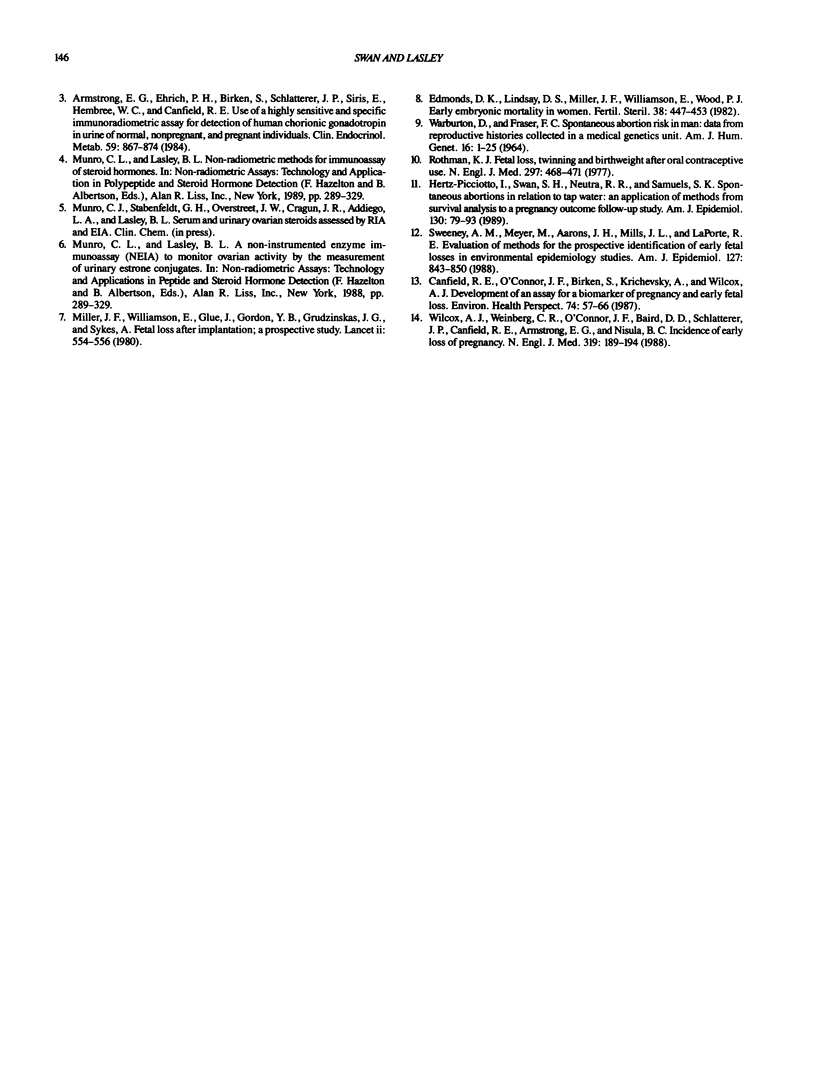Abstract
Hormone assays are being developed in the laboratory to detect specific molecular markers in nonclinical populations. Epidemiology is increasingly using these assays to improve the precision with which disease processes and exposures can be defined. This growing body of molecular epidemiology requires a high degree of cooperation between the assay developer and the assay user. We draw on our experience in using a sensitive hormone assay for the detection of early pregnancy via urinary human chorionic gonadotropin to illustrate these points. We conclude that this collaborative effort, in addition to making this study possible, has provided unexpected rewards.
Full text
PDF



Selected References
These references are in PubMed. This may not be the complete list of references from this article.
- Armstrong E. G., Ehrlich P. H., Birken S., Schlatterer J. P., Siris E., Hembree W. C., Canfield R. E. Use of a highly sensitive and specific immunoradiometric assay for detection of human chorionic gonadotropin in urine of normal, nonpregnant, and pregnant individuals. J Clin Endocrinol Metab. 1984 Nov;59(5):867–874. doi: 10.1210/jcem-59-5-867. [DOI] [PubMed] [Google Scholar]
- Canfield R. E., O'Connor J. F., Birken S., Krichevsky A., Wilcox A. J. Development of an assay for a biomarker of pregnancy and early fetal loss. Environ Health Perspect. 1987 Oct;74:57–66. doi: 10.1289/ehp.877457. [DOI] [PMC free article] [PubMed] [Google Scholar]
- Edmonds D. K., Lindsay K. S., Miller J. F., Williamson E., Wood P. J. Early embryonic mortality in women. Fertil Steril. 1982 Oct;38(4):447–453. [PubMed] [Google Scholar]
- Hertz-Picciotto I., Swan S. H., Neutra R. R., Samuels S. J. Spontaneous abortions in relation to consumption of tap water: an application of methods from survival analysis to a pregnancy follow-up study. Am J Epidemiol. 1989 Jul;130(1):79–93. doi: 10.1093/oxfordjournals.aje.a115325. [DOI] [PubMed] [Google Scholar]
- Lasley B. L., Stabenfeldt G. H., Overstreet J. W., Hanson F. W., Czekala N., Munro C. Urinary hormone levels at the time of ovulation and implantation. Fertil Steril. 1985 Jun;43(6):861–867. doi: 10.1016/s0015-0282(16)48613-9. [DOI] [PubMed] [Google Scholar]
- Miller J. F., Williamson E., Glue J., Gordon Y. B., Grudzinskas J. G., Sykes A. Fetal loss after implantation. A prospective study. Lancet. 1980 Sep 13;2(8194):554–556. doi: 10.1016/s0140-6736(80)91991-1. [DOI] [PubMed] [Google Scholar]
- Rothman K. J. Fetal loss, twinning and birth weight after oral-contraceptive use. N Engl J Med. 1977 Sep 1;297(9):468–471. doi: 10.1056/NEJM197709012970903. [DOI] [PubMed] [Google Scholar]
- Sweeney A. M., Meyer M. R., Aarons J. H., Mills J. L., LaPorte R. E. Evaluation of methods for the prospective identification of early fetal losses in environmental epidemiology studies. Am J Epidemiol. 1988 Apr;127(4):843–850. doi: 10.1093/oxfordjournals.aje.a114867. [DOI] [PubMed] [Google Scholar]
- WARBURTON D., FRASER F. C. SPONTANEOUS ABORTION RISKS IN MAN: DATA FROM REPRODUCTIVE HISTORIES COLLECTED IN A MEDICAL GENETICS UNIT. Am J Hum Genet. 1964 Mar;16:1–25. [PMC free article] [PubMed] [Google Scholar]
- Wilcox A. J., Weinberg C. R., O'Connor J. F., Baird D. D., Schlatterer J. P., Canfield R. E., Armstrong E. G., Nisula B. C. Incidence of early loss of pregnancy. N Engl J Med. 1988 Jul 28;319(4):189–194. doi: 10.1056/NEJM198807283190401. [DOI] [PubMed] [Google Scholar]


